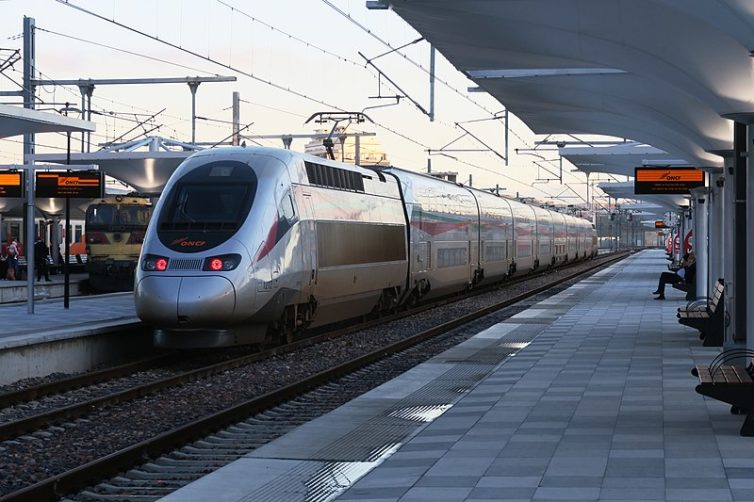
Image: Wikimedia Commons
Crazy times require crazy measures. There’s only so many stories about airplanes we can write at a time when few of us are actually flying. So how about something completely different?
In last year’s April Fools’ Day post titled “Reporter Empire,” our fearless leader David Parker Brown floated the idea of side projects like TrainReporter, ShipReporter, and CatReporter. Sadly I don’t have a cat. And going on a cruise ship seems like a really bad idea right now. But I did get to ride a pretty cool train a few months ago: Morocco’s new Al Boraq high-speed line — the first-ever bullet train on the African continent.
We never left the ground, but writing this story I was surprised how much my train trip report had in common with our usual flight stories. So choo choo, AvGeeks and TrainGeeks alike! Read on for some thoughts, photos, and videos from my 186-mile-per-hour run on the Al Boraq bullet train.
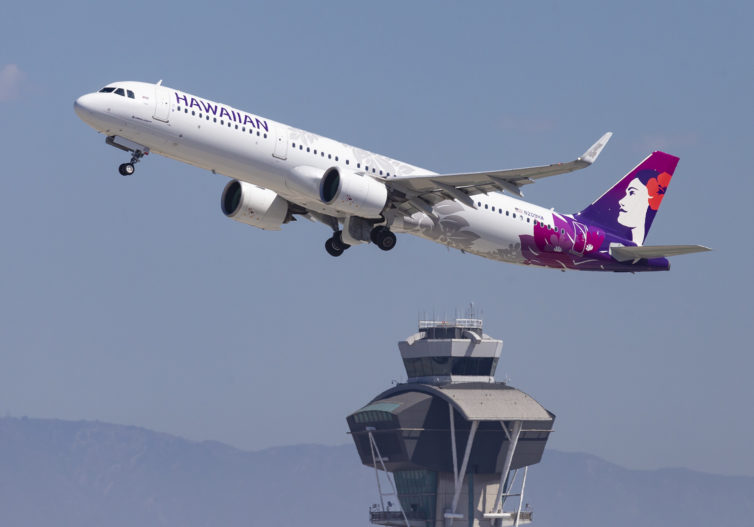
Hawaiian’s A321neos have been grounded by COVID-19; this aircraft is seen departing LAX in September 2019 – Photo: Nick Benson
For those following the impacts of COVID-19 on American aviation closely, it’s been an exhausting couple of months. Airlines have been hemorrhaging money, arguing for CARES Act exemptions from a fairly-inflexible DOT, and reducing their employment obligations to tens of thousands of employees. The full impact of the crisis on aviation, and the economy at large, still isn’t known.
The airlines have been reacting to the decreased demand for passenger flights by operating fewer flights with fewer aircraft. Being the avgeek I am, I was interested to see the evolution of each airline’s fleet as it reacted to COVID-19 – which types are getting hit hardest? Do airlines have a preference for newer, more efficient equipment, despite decreased fuel costs? There has been some coverage of the overall number of flights getting operated, pre-crisis vs. post-crisis scheduling, but I was interested to see how many aircraft each airline was actually operating.
The charts that follow show the total number of unique aircraft that flew for each airline, by type, each week from 30 December 2018 through 26 April 2020. This includes all flights that were detected, primarily derived by ADS-B reports, to JetTip’s data provider, including ferry, maintenance, cargo, etc. In other words, not all of these flights were necessarily revenue passenger flights – several carriers are doing cargo-only flights with their heavies now, and some flights are being operated to keep up with maintenance requirements.
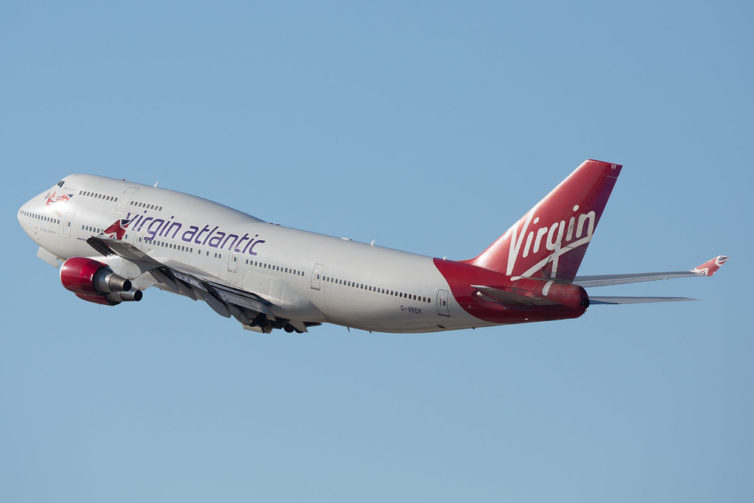
Virgin Atlantic Boeing 747-400 – Photo: Jeremy Dwyer Lindgren | JDLMultimedia
Somewhere in Massachusetts, a mid-’90s family photo album possesses the first photo I ever took of a Boeing 747. It was a Virgin Atlantic bird at Orlando International.
I couldn’t tell you the last time I saw the photo, but I can still recall it clearly twenty-five years later: poorly framed through the window of a Delta 737-200 that I definitely did not appreciate enough at the time; the distinctive Virgin red tail towered over everything else, glowing in the humid, golden-hour Florida air.
While Disney World itself might have been the highlight of going to Disney World for most kids, the airport and the airplanes were the far and away winner for me. I loved every detail that I didn’t hate (turns out younger me found flying absolutely petrifying, but that’s another story).
The curbside chaos at Boston Logan, with barking state troopers and bustling skycaps. The busyness of the terminal, filled with people and the promise of going to new places. All the different airlines and airplanes, many of whom are no longer with us. The smell of the forced air on boarding (gosh I love that smell). Riding that skytrain thing, I don’t know what it’s called, at the airport in Orlando.
It was thrilling to ten year old me.
Yet craning my neck out the window, trying to steal a glimpse of the Virgin 747s after landing ’“ that was always the highlight. Every time.
When I learned that Kansas City International (MCI) would become the location of a mass airplane storage site, I ignored it. COVID-19 has brought unprecedented and rapid change upon us all. And we are all coping with it differently. For me, rather than accept the fact that my passion has ground to a halt, I have done my best to ignore the bad news while focusing internally on my family and friends.
But history is in the making and after a few weeks of airplane stockpiling I had to go see. I don’t know what I expected. I was excited to visit the airport for the first time in months. But when we drove past the threshold of runway 19L the site was… heartbreaking. Words truly cannot describe the feeling of seeing over a hundred planes in “active storage” lining a once busy runway and taxiway at an airport that has seen consistent and impressive growth over the past few years.
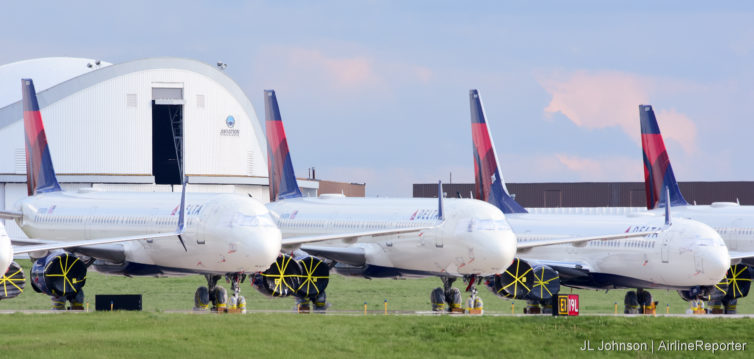
Parked Plane Stats:
I called my good friend Nick Benson, chief AvGeek over at JetTip to see just how many planes have been parked at Kansas City International since the pandemic took hold.
 What do you get when you combine writing about airline travel since 2008, with a few decades of being a sarcastic chap? Unsolicited Travel Advice from David (the Editor-in-Chief of this dog and pony show) — that’s what! There are way too many travel-related click-bait stories out there that give you boring and questionable information from “experts.” This series will be different — I will give you entertaining, possibly less questionable information, while not caring about any sort of clicks or bait. Let me set the mood. Imagine that you and I are hanging out (before all the COVID-19 stuff ), when we have just hit upon an interesting airline/travel topic (free first class upgrade) and I am fired up and ready to spew my thoughts and opinions. When I wrap up, I am hoping that you won’t just awkwardly stare at me, but instead continue the conversation in the comments. Let’s do this…
What do you get when you combine writing about airline travel since 2008, with a few decades of being a sarcastic chap? Unsolicited Travel Advice from David (the Editor-in-Chief of this dog and pony show) — that’s what! There are way too many travel-related click-bait stories out there that give you boring and questionable information from “experts.” This series will be different — I will give you entertaining, possibly less questionable information, while not caring about any sort of clicks or bait. Let me set the mood. Imagine that you and I are hanging out (before all the COVID-19 stuff ), when we have just hit upon an interesting airline/travel topic (free first class upgrade) and I am fired up and ready to spew my thoughts and opinions. When I wrap up, I am hoping that you won’t just awkwardly stare at me, but instead continue the conversation in the comments. Let’s do this…
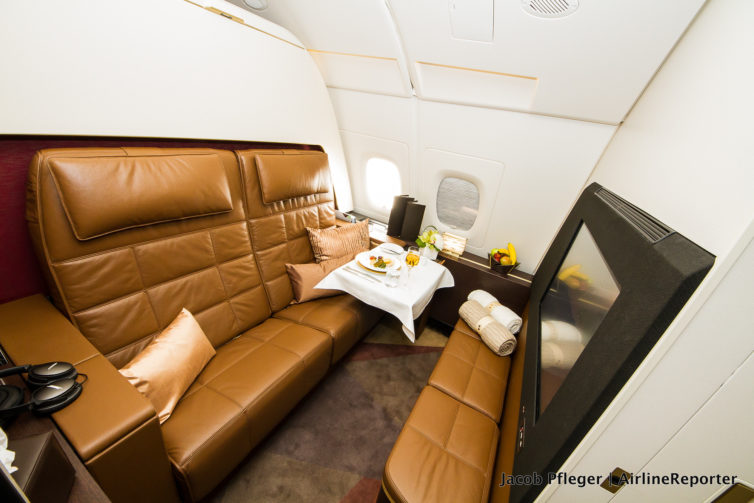
Now, that is what I am talking about — what I think about when I think “first class.” (this is on a Etihad A380)
HOW DO I GET A FREE FIRST CLASS UPGRADE?
This one is easy. You don’t. Conversation over.
“This is not what I was expecting,” you might be thinking to yourself. “I have heard about special tricks, some have to work, right?” Okay, okay, this wouldn’t be any fun if I didn’t at least talk about some of my favorite “tricks” that travel “experts” have given over the years. Or at least make fun of some:
- Dress to Impress: I have seen this one for years. The idea is you dress to the nines, and the flight crew will be so impressed, that they will upgrade you for free. Right. Maybe (just maybe) this would have worked decades ago, but flying has changed. First class passengers wear everything from suits to PJs (and worse).
- Suck Up: There are a number of valid reasons to bring a little present for your flight crew (like if you have loud kids, or you plan to act like a kid), but some passengers will try to butter the flight crew up before asking for an upgrade. It is not very genuine and I am guessing that the success rate is pretty low.
- Be a Frequent Flier: If this is the first time you are hearing about being a frequent flier, you probably don’t deserve first class upgrades. #sorrynotsorry
- Hope Your Seat is Broken: Seriously, I saw this given as real advice. Because if it is broken, you might get sent to first class. Heck, why not go one step further and just break your seat? Then demand to be put in first class (this is me being sarcastic — do not do that). Of course, this could all backfire and you’d end up in a back middle seat, delayed to the next flight, or permanently banned from the airline.
- Lie: Just tell them it is your birthday (hope they don’t ask for your ID), your anniversary, or you are going on your honeymoon (make sure you have someone with you). Maybe they will upgrade you on your “special” day.
- Be Sneaky: Be one of the last to board or wait until the plane takes off and go find yourself an empty first class seat. Even if you ignore the fact that this is pretty much theft, the flight crew has a pretty good idea who is supposed to be in the premium seats and it is not you!
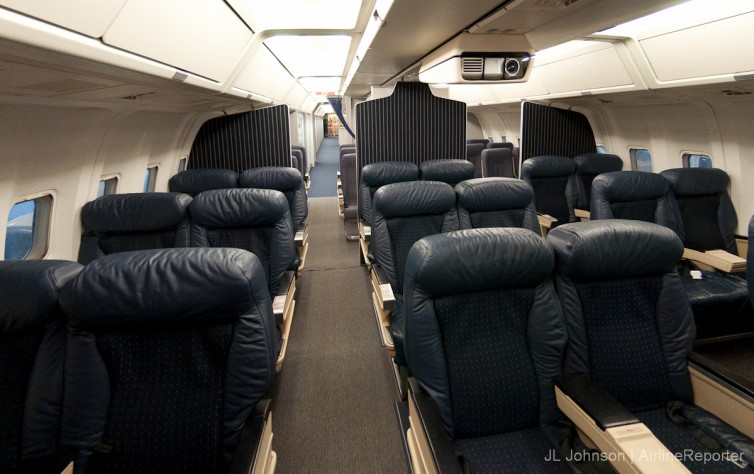
This classic first class is totally worth trying all the tricks in the book… it even has a sweet projector!
Those are all pretty worthless, but have no fear! I have 5 WAYS TO GET A FREE UPGRADE TO FIRST CLASS, that are 100%* legit. Keep reading to find out what they are (you won’t believe #4)…






